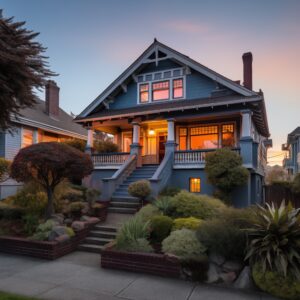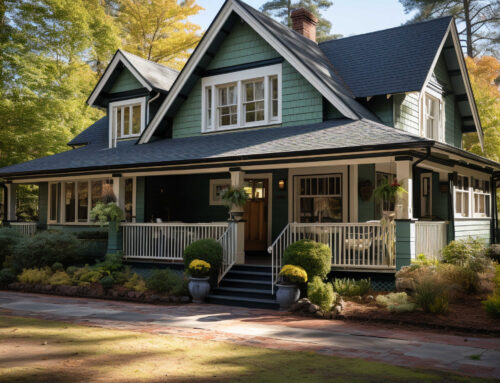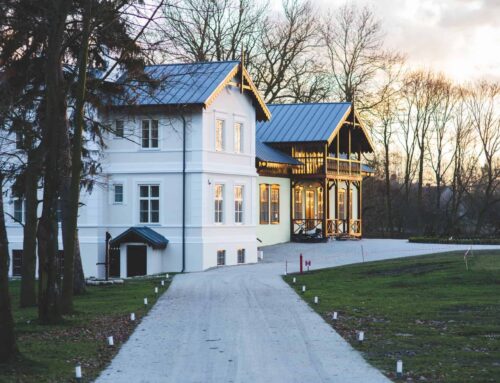Comparative Analysis: San Francisco’s Median Home Price vs. National Averages
San Francisco, known for its iconic Golden Gate Bridge, vibrant tech scene, and picturesque landscapes, also stands out for its housing market – one of the most expensive in the United States. This comparative analysis delves into the stark differences between San Francisco’s median home prices and the national averages, exploring the factors contributing to these disparities and their implications for prospective buyers.
The Stark Contrast
As of the latest data available, San Francisco’s median home price significantly eclipses the national average. While the national median home price hovers around $350,000, San Francisco’s median can soar to over $1.3 million. This discrepancy highlights the premium of living in a city that is a hub for technology, finance, and culture.
Factors Contributing to the High Prices in San Francisco
Several key factors contribute to the elevated housing prices in San Francisco compared to the rest of the country:
- Limited Supply and High Demand: San Francisco’s geographical constraints, bordered by the Pacific Ocean and the San Francisco Bay, limit the available land for development. Coupled with the city’s desirability among tech professionals, entrepreneurs, and those seeking a high quality of life, the demand for housing far outstrips supply.
- Tech Industry Salaries: The thriving tech industry in the Bay Area has led to higher average salaries, allowing individuals to afford more expensive homes. This influx of high earners drives up home prices as people are willing and able to pay premium prices for real estate.
- Zoning and Regulation: Strict zoning laws and building regulations in San Francisco make it challenging to construct new housing. These limitations on development contribute to the scarcity of available homes, pushing prices upward.
- Investment and Foreign Buyers: San Francisco’s real estate market attracts investors and foreign buyers looking for safe and lucrative investment opportunities. This additional demand further inflates home prices.
Neighborhoods with the highest median home prices
- Pacific Heights: Often topping the list, Pacific Heights is renowned for its stunning views of the Golden Gate Bridge, San Francisco Bay, and the downtown skyline. The neighborhood is home to many of the city’s most luxurious mansions and historic Victorian homes. It’s a favorite among tech entrepreneurs and executives.
- Sea Cliff: Known for its secluded, large homes with breathtaking views of the Pacific Ocean and the Golden Gate, Sea Cliff is one of the city’s most exclusive neighborhoods. It attracts a wealthy clientele seeking privacy and spectacular scenery.
- Noe Valley: With its sunny weather, central location, and family-friendly atmosphere, Noe Valley appeals to professionals and families alike. The neighborhood features charming Victorian and Edwardian homes, and its main thoroughfare, 24th Street, is bustling with boutiques, cafes, and restaurants.
- Russian Hill: Famous for the crooked section of Lombard Street, Russian Hill offers a mix of modern condos and historic homes. It’s known for its steep hills, which provide some of the most picturesque views in the city, making it a highly desirable area for affluent buyers.
- Cow Hollow: Nestled between the Presidio and the Marina, Cow Hollow is popular among young professionals and families. It combines a suburban feel with close proximity to upscale shopping and dining on Union Street, and it’s just a short walk from the waterfront.
- Presidio Heights: Adjacent to the Presidio of San Francisco, a vast park and former military base, Presidio Heights offers large homes and mansions with easy access to green space. It’s favored by families and individuals seeking a quieter lifestyle while still being close to the city’s amenities.
- Nob Hill: Known for its luxury hotels, historic mansions, and central location, Nob Hill is one of San Francisco’s signature neighborhoods. It offers stunning city views, elegant dining, and a rich history, appealing to those looking for a classic San Francisco experience.
- Telegraph Hill: Famous for Coit Tower and its wild parrot population, Telegraph Hill is a quieter residential area known for its small, charming cottages and apartment buildings with expansive views of the Bay, the Bridge, and the city.
- Marina District: With its flat, sunnier streets and beautiful views of the Golden Gate Bridge, the Marina District attracts a younger crowd. The area is known for its Art Deco buildings and vibrant nightlife along Chestnut Street.
Neighborhoods with the lowest median home prices
- Bayview: Bayview is known for its diverse community and vibrant arts scene. The neighborhood has historically been more affordable than other areas of San Francisco, attracting first-time homebuyers and artists. However, prices have been on the rise as the area undergoes development and revitalization.
- Excelsior: Excelsior is a residential neighborhood with a strong sense of community and cultural diversity. It offers relatively affordable housing options, making it popular for families and first-time homebuyers. The neighborhood’s access to public transportation and community amenities adds to its appeal.
- Visitacion Valley: Located in the southeastern part of the city, Visitacion Valley is another area known for more accessible home prices. It has a mix of single-family homes and multi-unit buildings. The neighborhood is experiencing new developments and improvements in public parks and community facilities.
- Portola: Often referred to as “The Garden District,” Portola is known for its community gardens and vibrant commercial strip on San Bruno Avenue. The neighborhood offers a mix of housing options at relatively lower prices when compared to other parts of the city, attracting families and young professionals.
- Outer Mission: The Outer Mission offers a variety of housing options, including single-family homes and apartments, at more affordable prices. It’s known for its diverse community, local eateries, and shops. The neighborhood’s accessibility to public transportation and highways makes it a convenient option for commuters.
- Ingleside: Ingleside is a residential neighborhood with a mix of single-family homes and apartments. It offers relatively affordable housing options and benefits from access to the M Ocean View Muni line, making it convenient for those working in downtown San Francisco or attending San Francisco State University.
Implications for Prospective Buyers
The high median home price in San Francisco has several implications for prospective buyers:
- Affordability: For many, homeownership in San Francisco remains out of reach. Buyers often need high incomes, substantial savings, or both to afford a median-priced home in the city.
- Competition: The competitive market means buyers must act quickly and often pay above the asking price to secure a property. This environment can be daunting for first-time buyers and those without significant financial resources.
- Alternative Living Arrangements: Some residents opt for alternative living arrangements, such as co-living spaces, renting or purchasing property in more affordable neighboring areas, and commuting to San Francisco.
National Comparison
Nationally, the housing market exhibits a wide range of median home prices, with affordable options in many cities and regions. The national average provides a baseline, but local markets can vary dramatically based on economic conditions, demand, and geographic constraints.
San Francisco’s median home price is a testament to the city’s desirability, economic prosperity, and the challenges of managing growth within geographic and regulatory constraints. While the dream of living in San Francisco may be compelling, it comes with the reality of navigating one of the country’s most expensive real estate markets.
Understanding these dynamics is crucial for prospective buyers to make informed decisions about homeownership in San Francisco versus other locations. As the city continues to evolve, so will its housing market, reflecting broader economic trends, technology, and urban development trends.
[/fusion_text][/fusion_builder_column][/fusion_builder_row][/fusion_builder_container]





